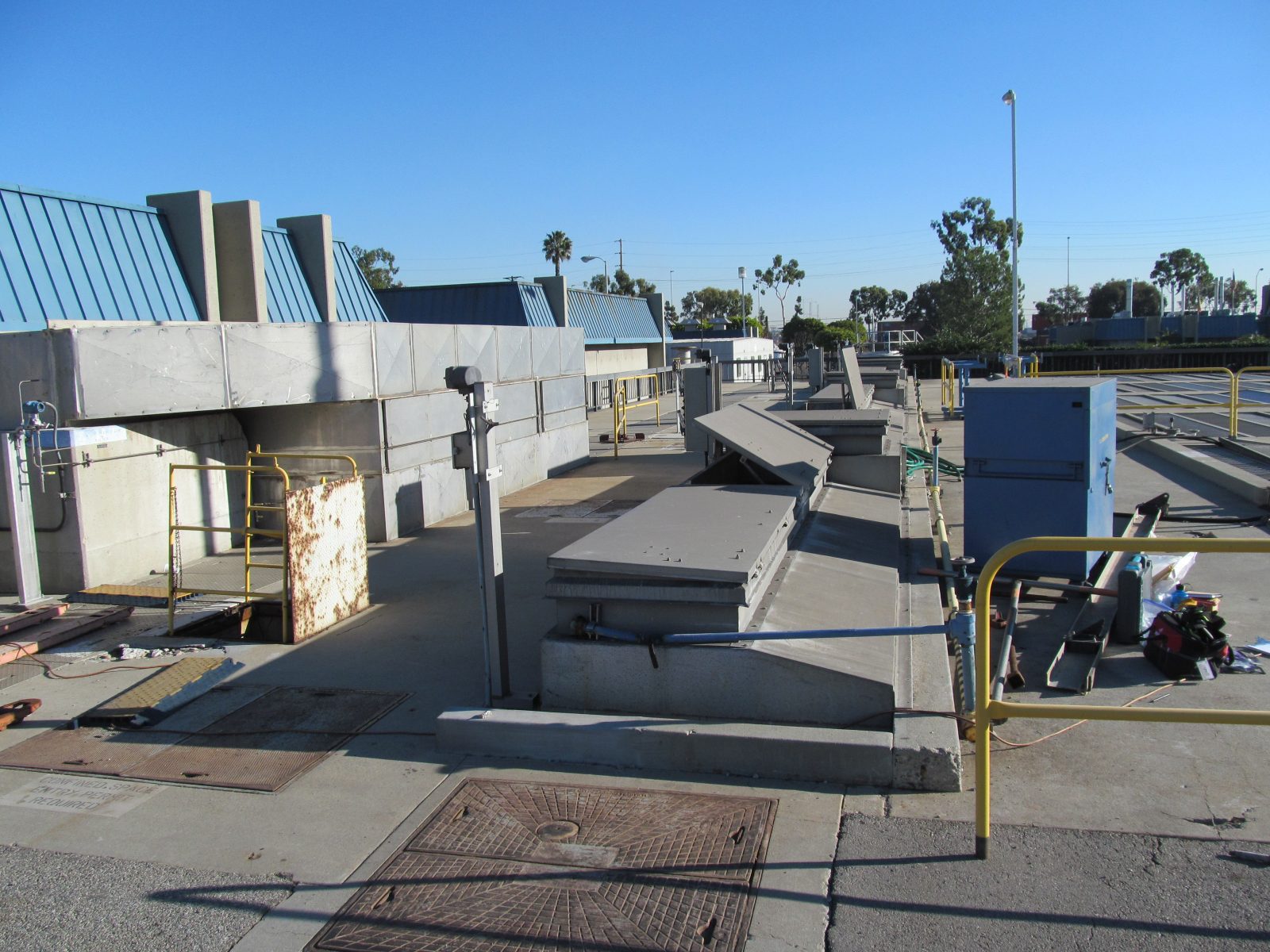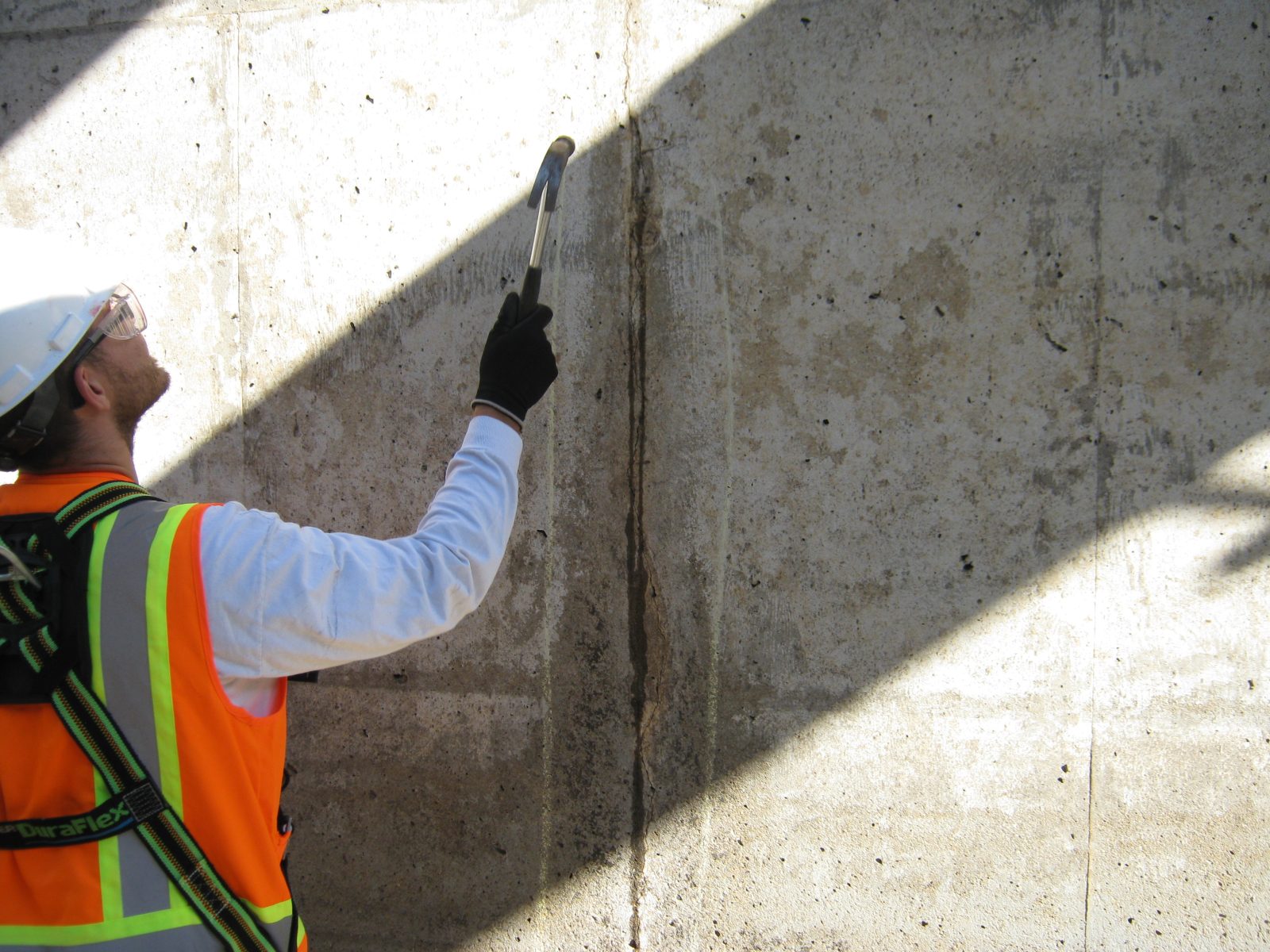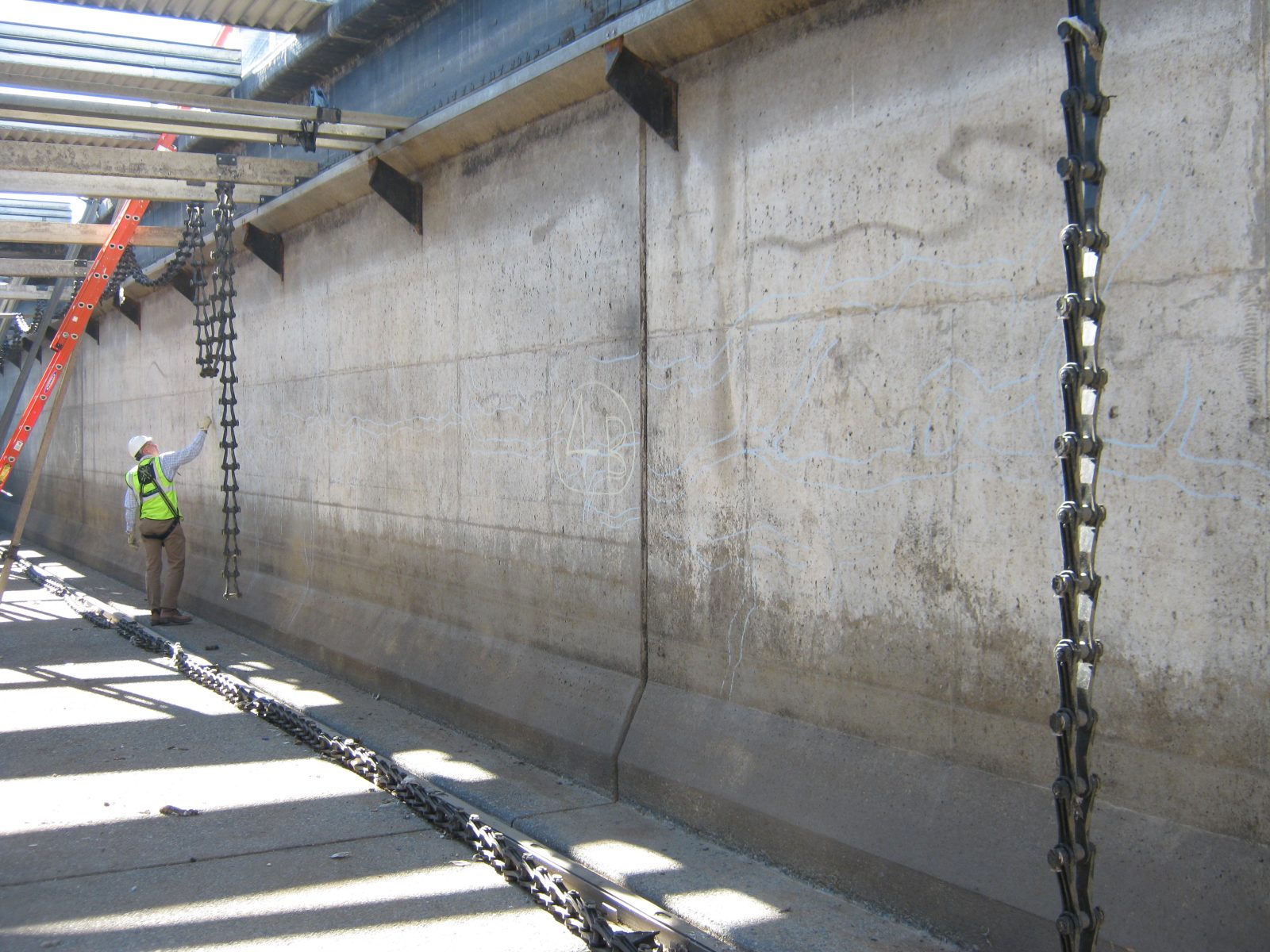San Pedro, CA
Terminal Island Water Reclamation Plant, Tank 1
Scope/Solutions
Terminal Island Water Reclamation Plant provides tertiary treatment for up to 30 million gallons of wastewater from industrial and residential areas of San Pedro, Harbor City, and Wilmington, California. LA Sanitation wanted to understand the condition of the primary sedimentation tank (Tank 1) and the north end valve gallery, which are partially buried structures. SGH assessed the condition of the structures’ interior and topside and recommended repairs.
Originally constructed in the 1970s, Tank 1 is a cast-in-place reinforced concrete structure approximately 250 ft long, 20 ft wide, and 15 ft deep with removable modular metal covers and a 130 ft long valve gallery. Highlights of our assessment include:
- Visually surveying accessible areas of the tank’s floor and walls, the inside and topside of the valve gallery, and the topside of the south walkway to document visual damage, such as cracks and spalls and signs of leakage
- Sounding and performing nondestructive testing to identify the approximate location and extent of delaminated concrete
- Using ground penetrating radar to measure the clear cover to the reinforcing bars in the tank
- Evaluating the effects of existing deterioration and distress on the structural capacity of the structure
- Developing conceptual concrete repairs for the tank’s north wall and topside, valve gallery interior, access hatches, and walkways
- Recommending grout injecting cracks with active leakage, and proposing repairs to corroded steel appurtenances, such as covers and drains
Project Summary
Solutions
Repair & Rehabilitation
Services
Structures | Applied Science & Research
Markets
Infrastructure & Transportation
Client(s)
Murray Company
Specialized Capabilities
Repair & Strengthening | Materials Science
Key team members

Additional Projects
West
Spanish Peaks Ski Bridge
The Spanish Peaks, running north of Big Sky, Montana, are part of the Rocky Mountains. Working as part of the design-build team, SGH developed a design for the tunnel and the mechanically stabilized earth (MSE) walls at the ends that would withstand the design earthquake.
West
Natgun Water Storage Tanks
SGH developed a seismic design procedure for the domes and peer reviewed the tank designs. We used the procedure to design a number of tanks constructed in high seismic regions.



